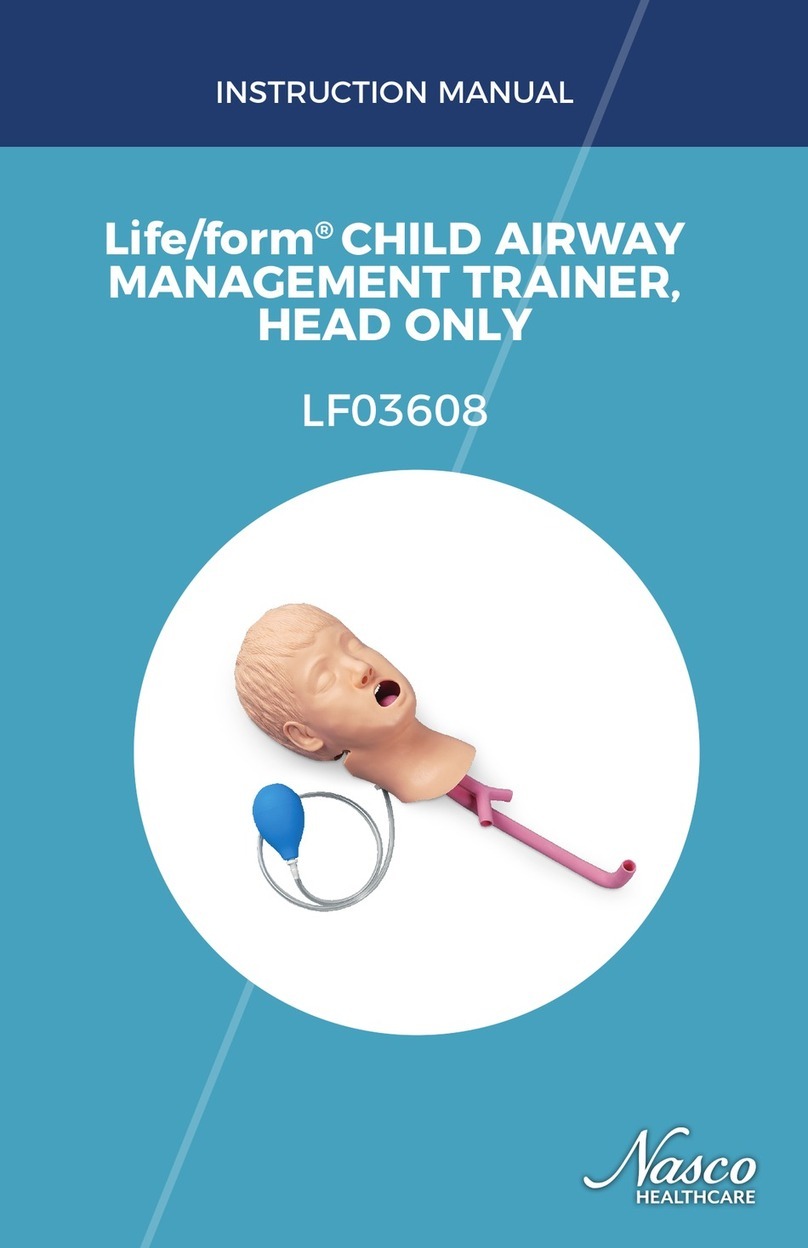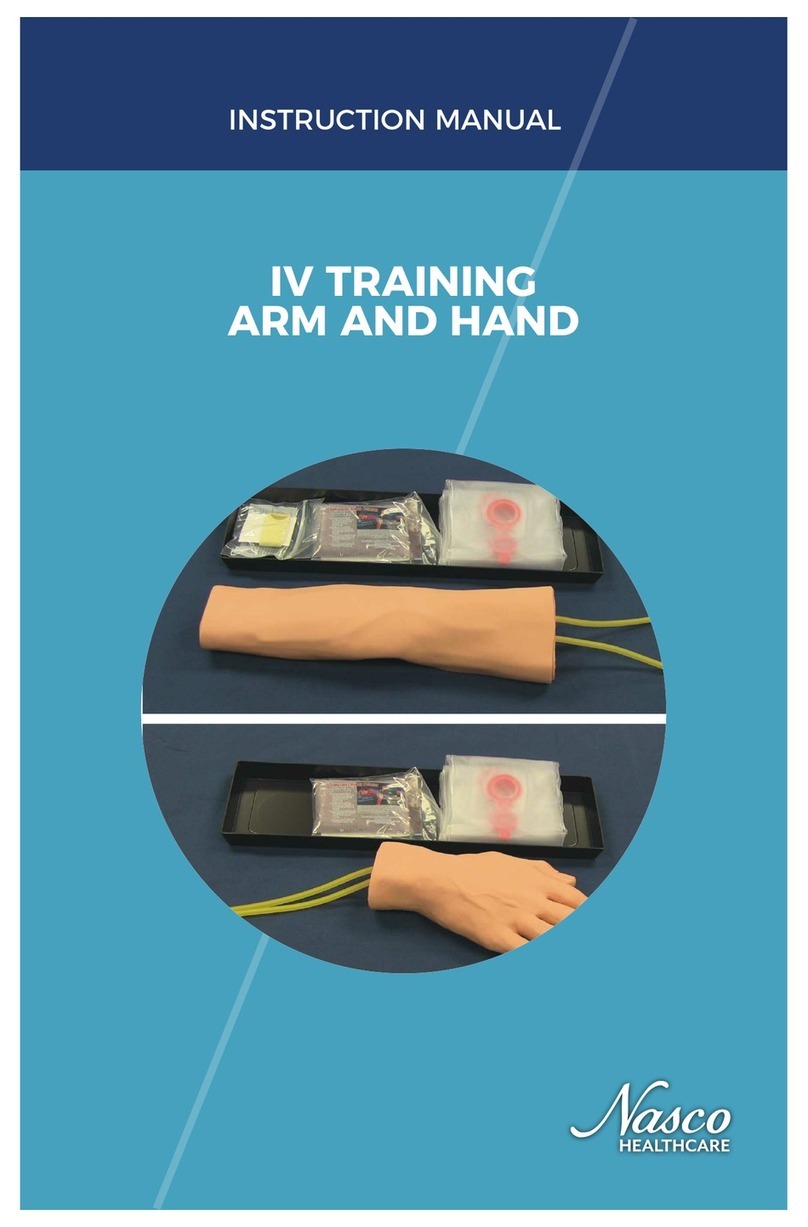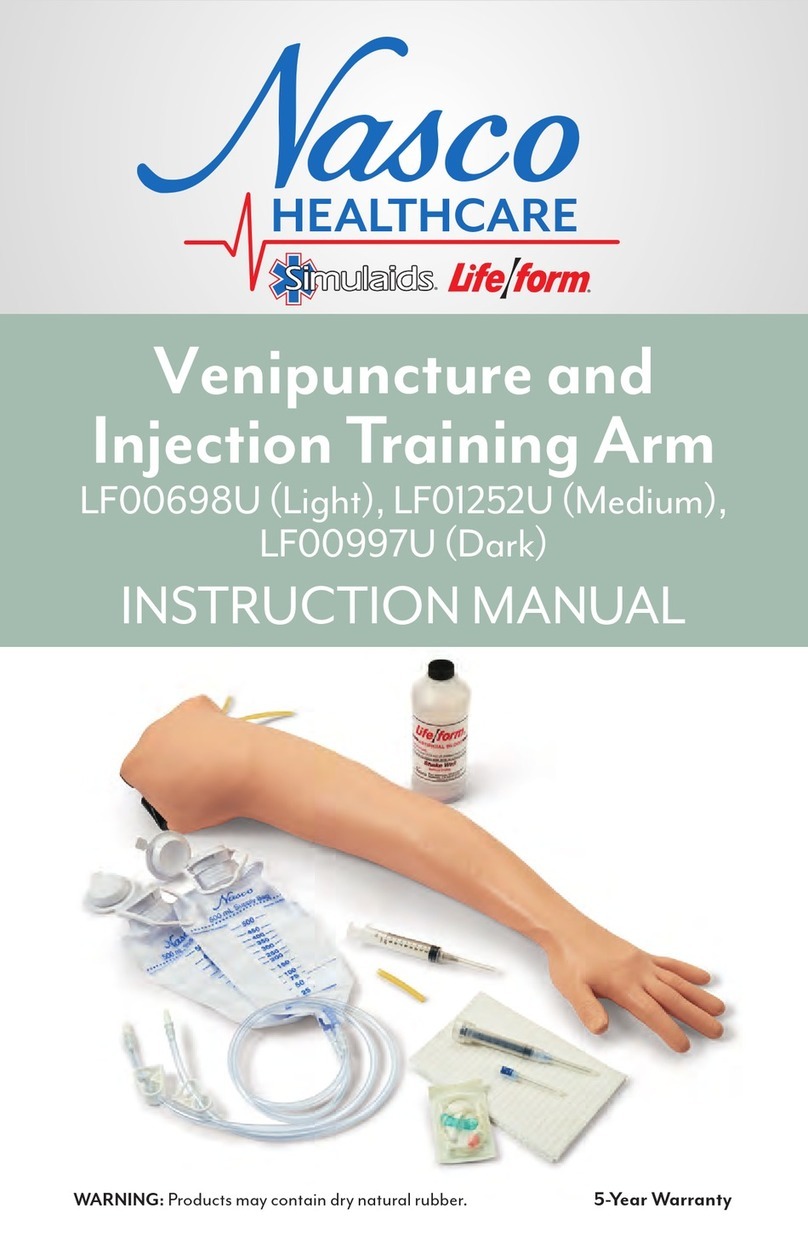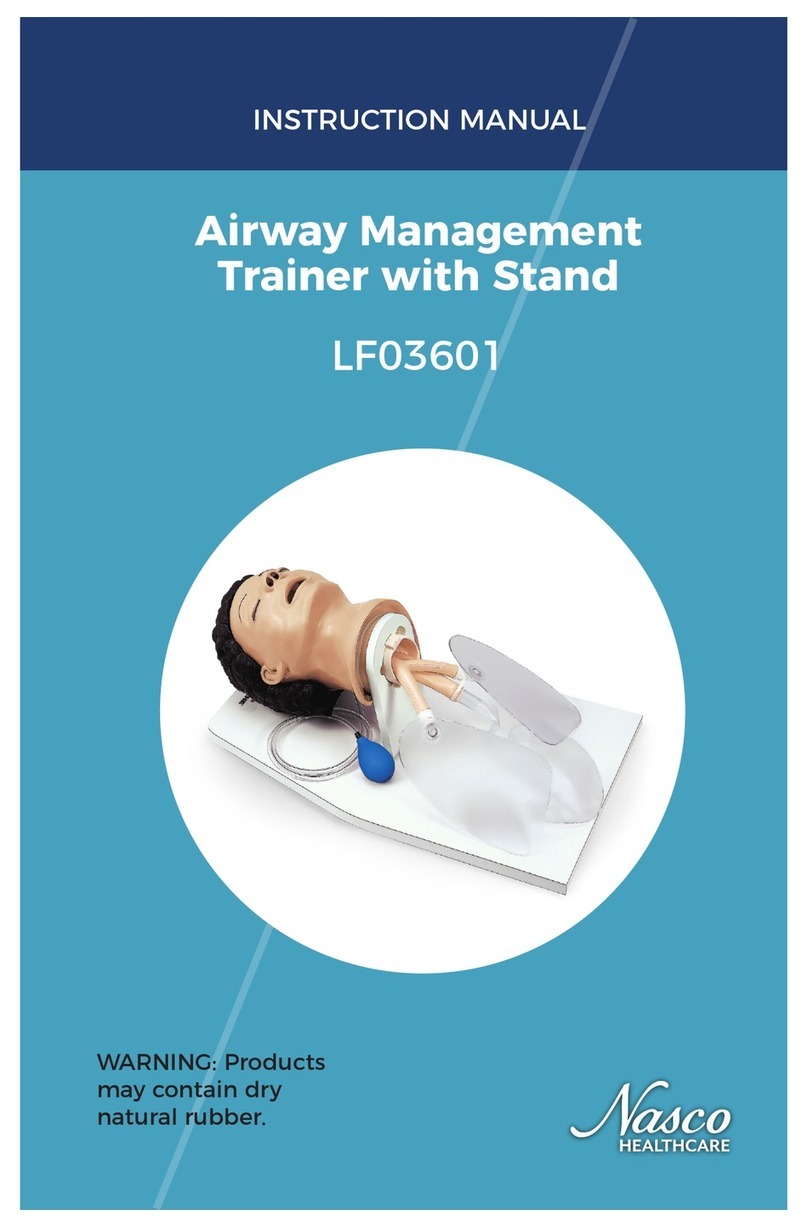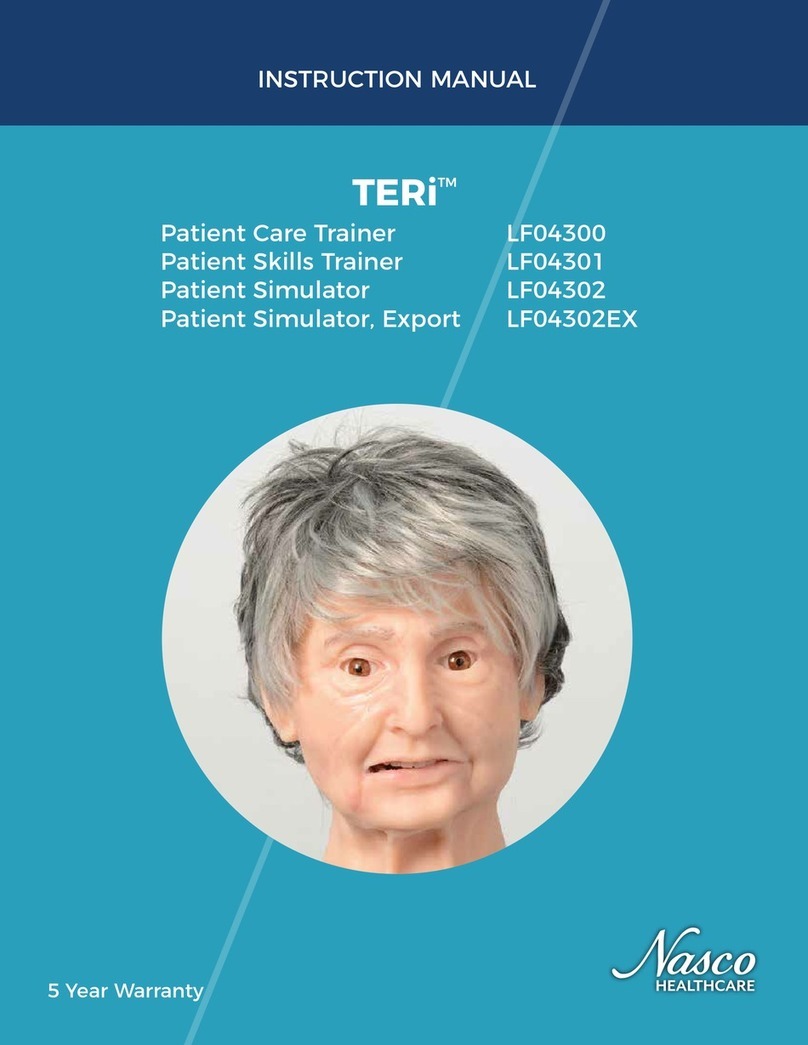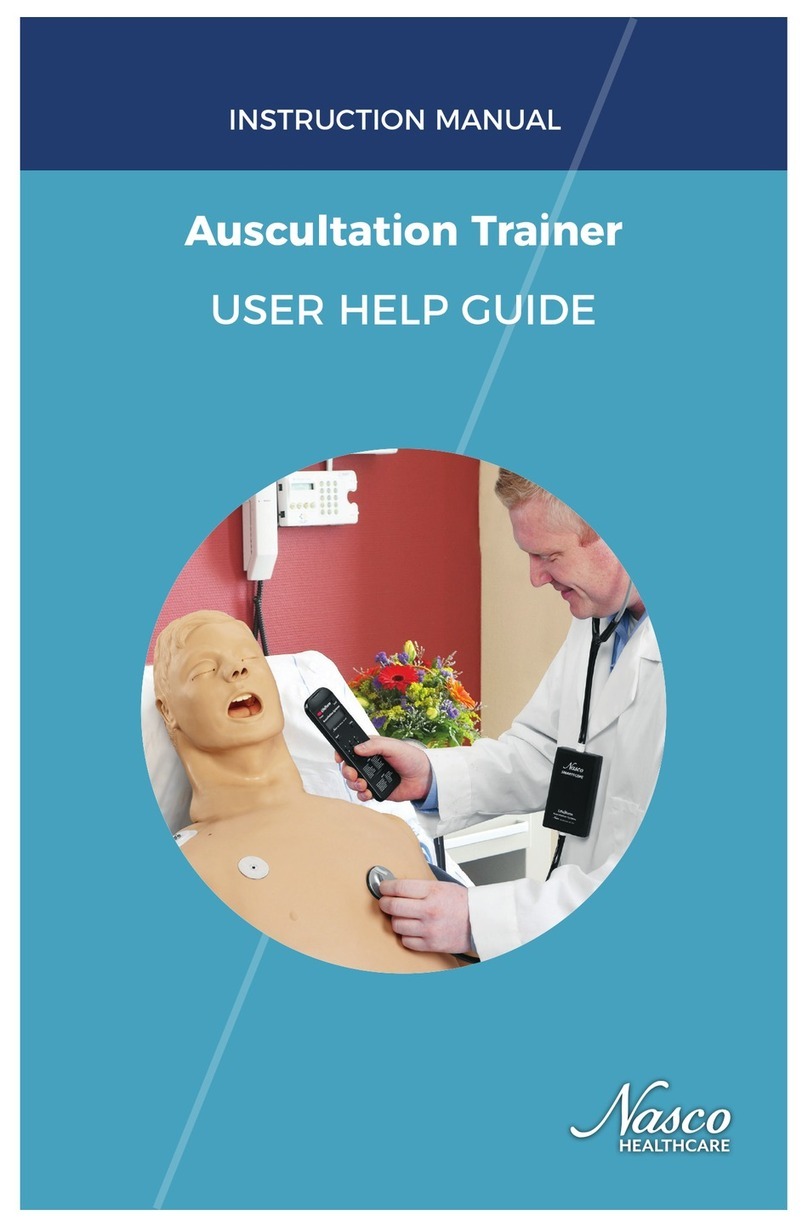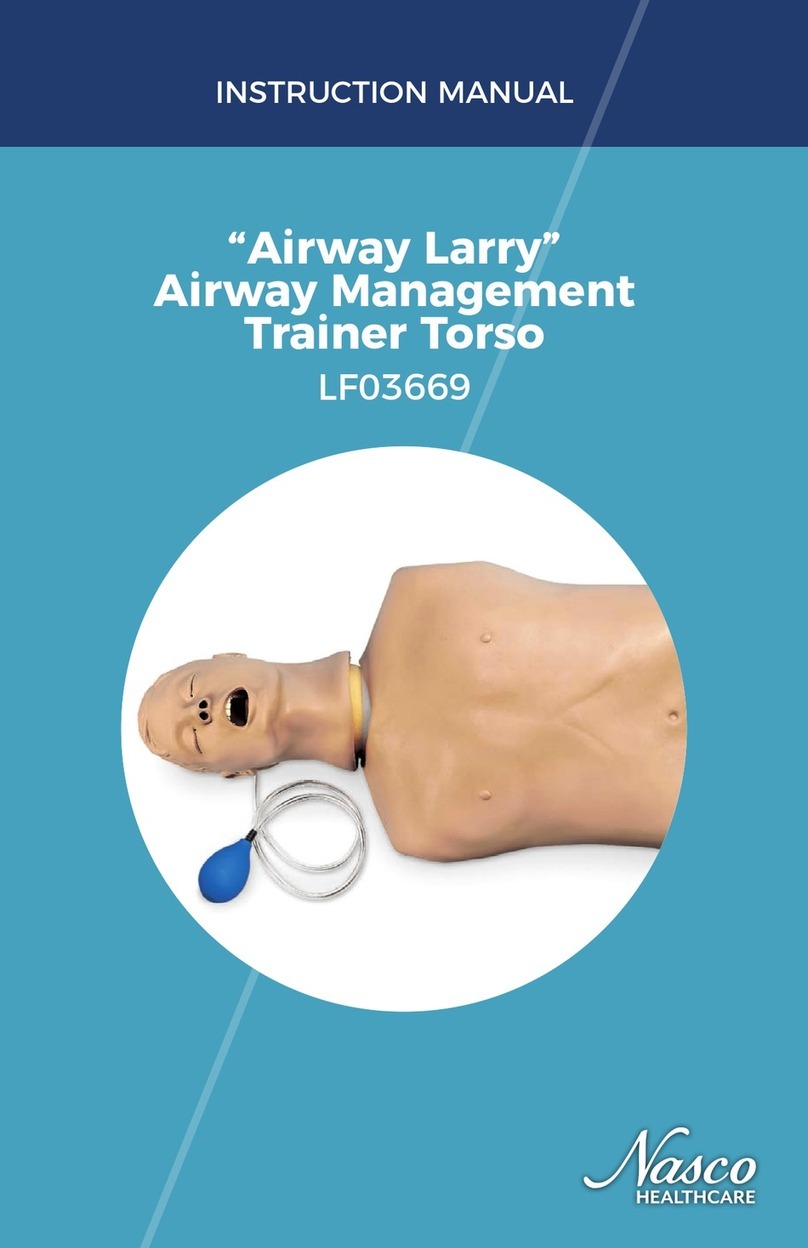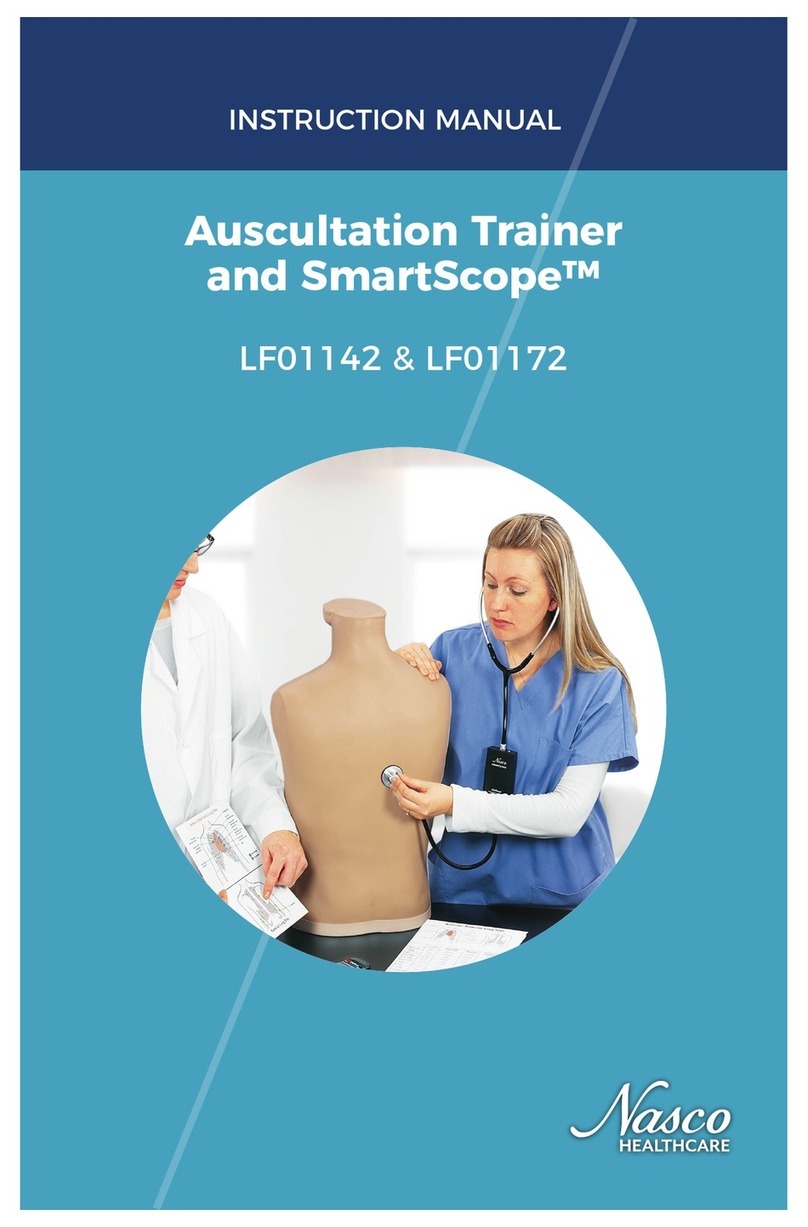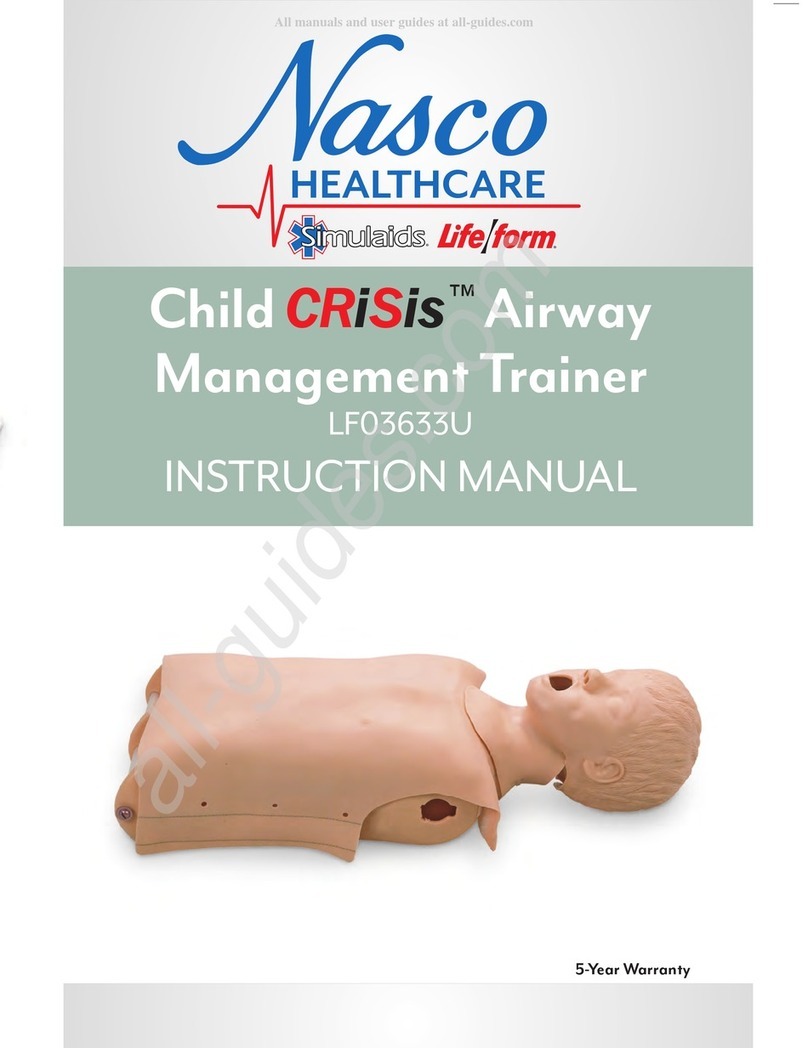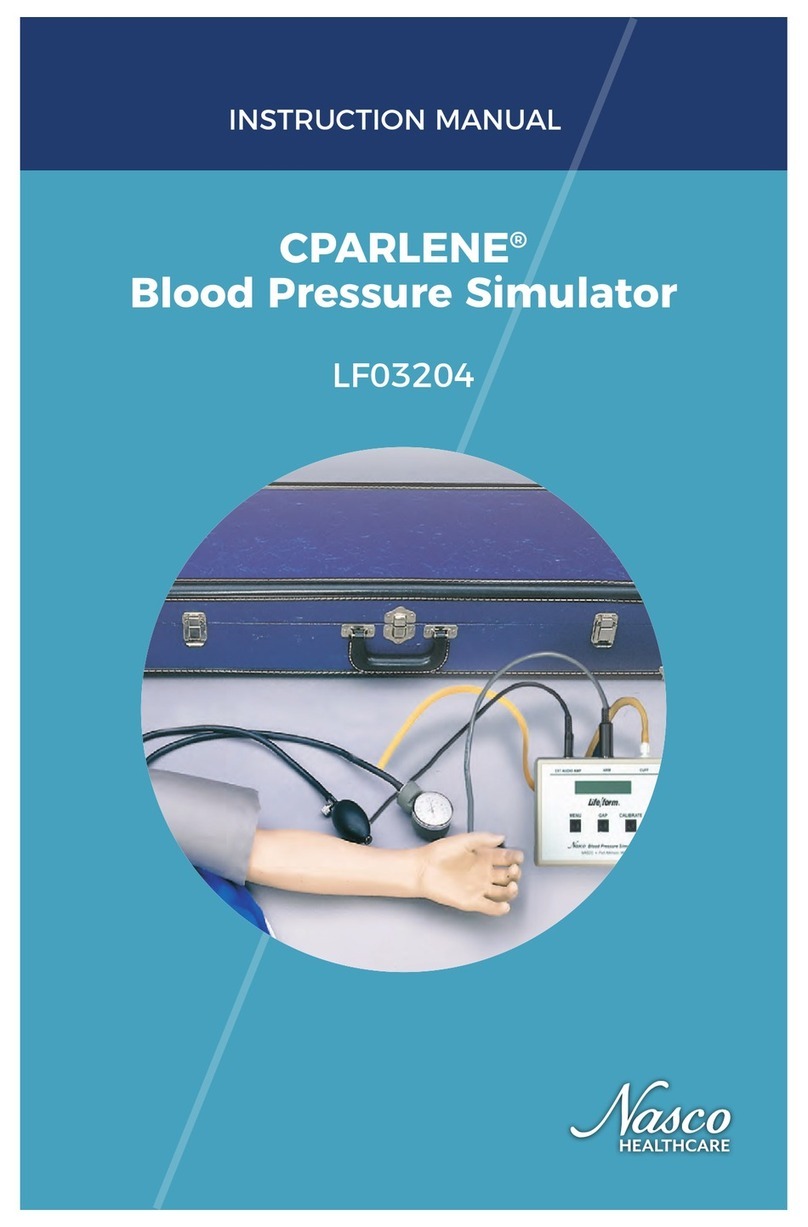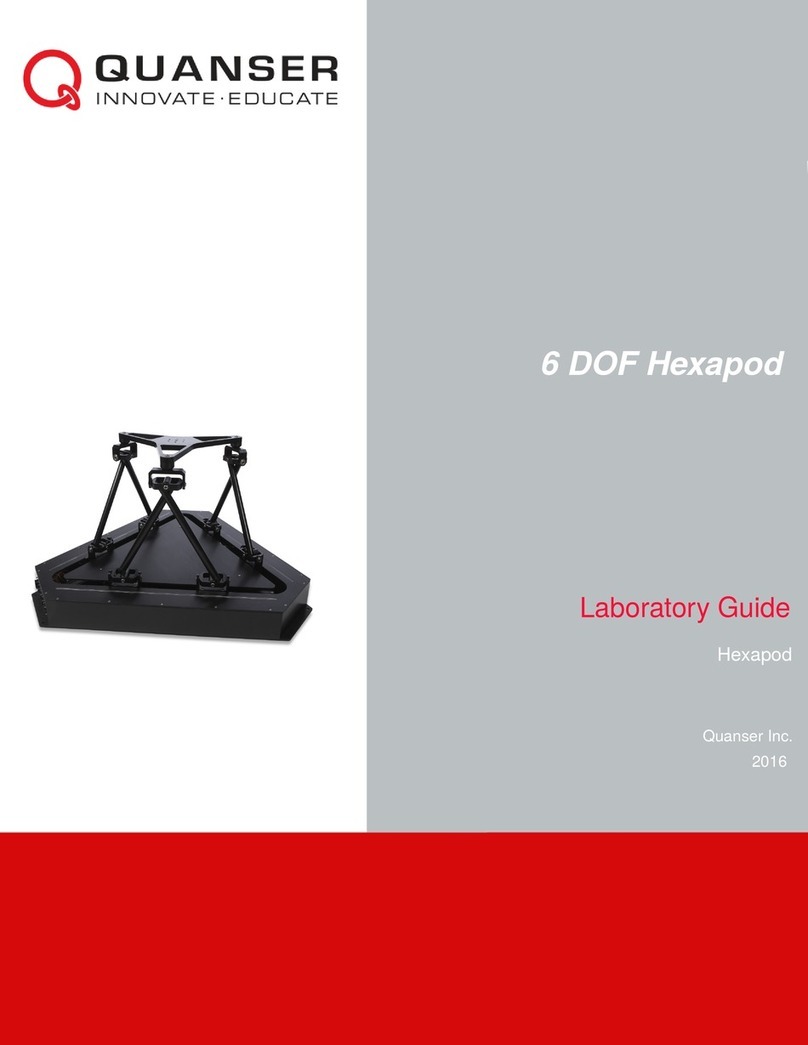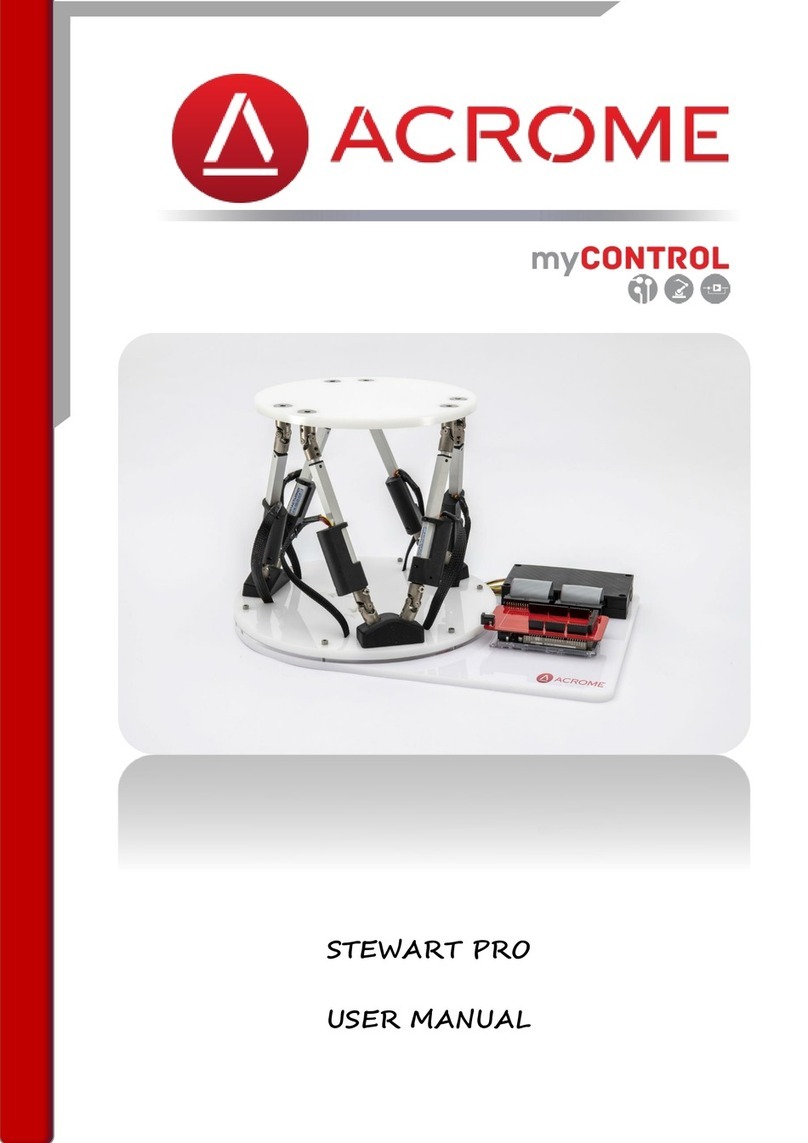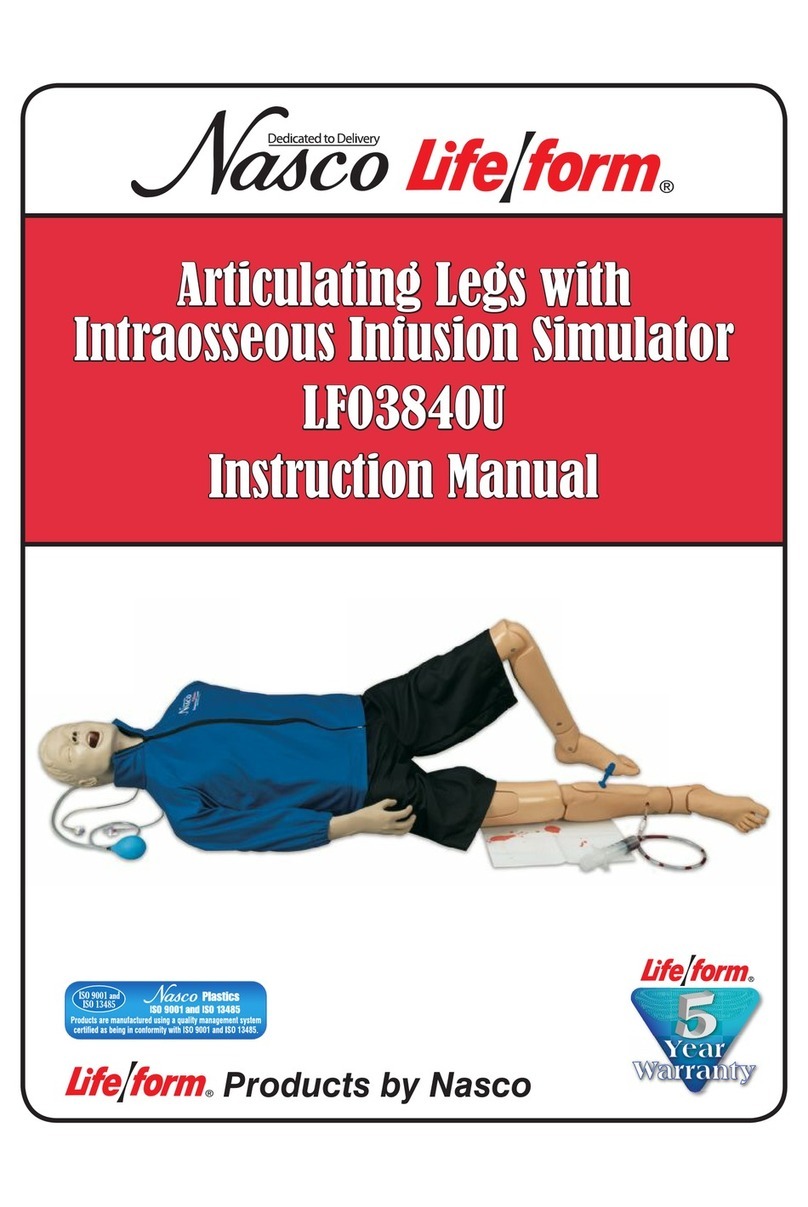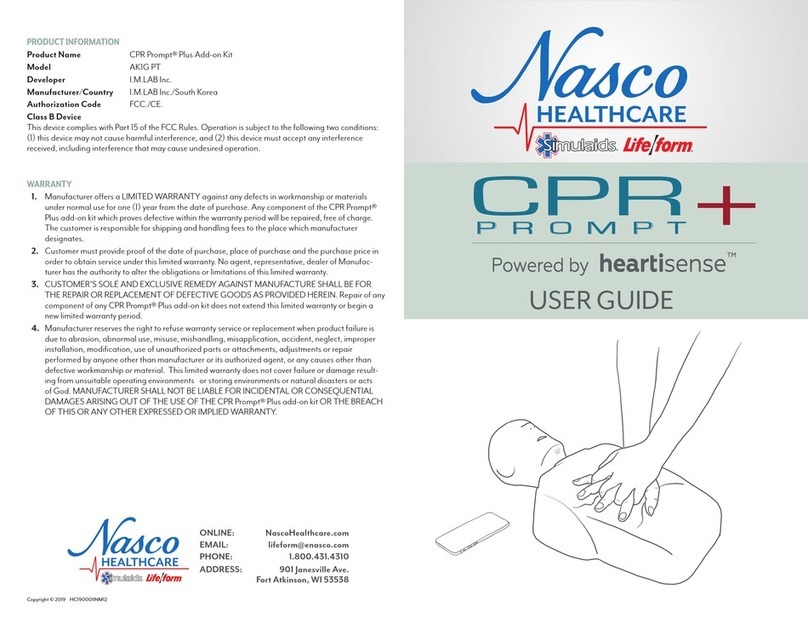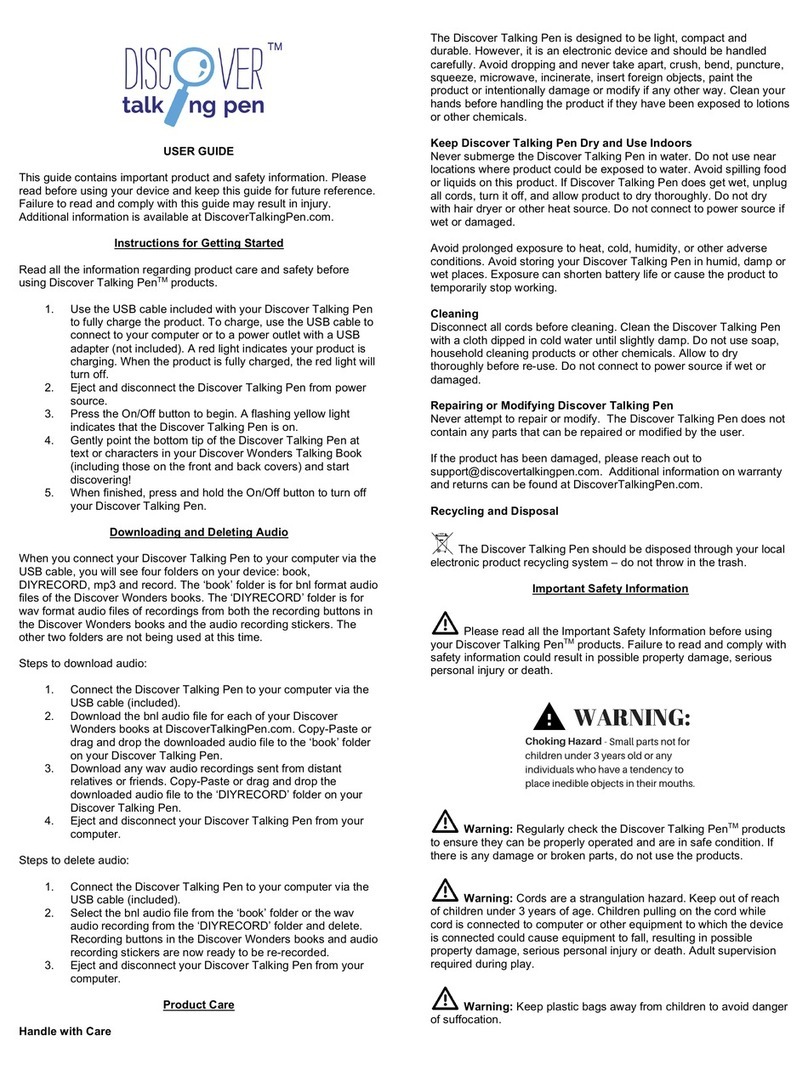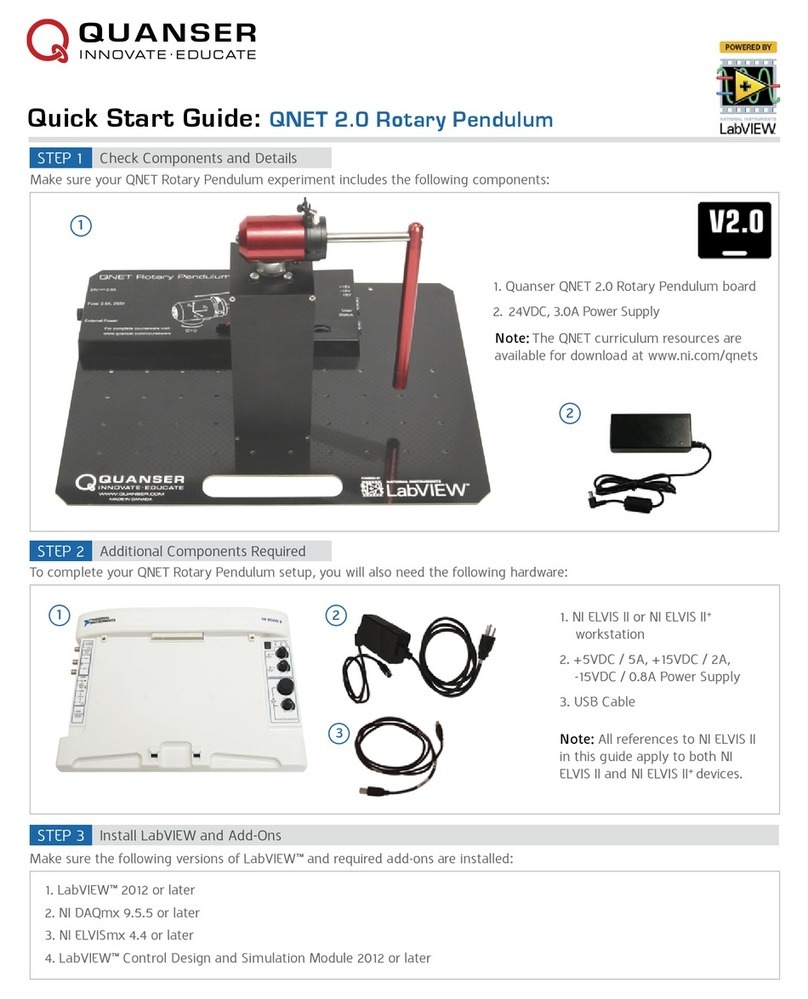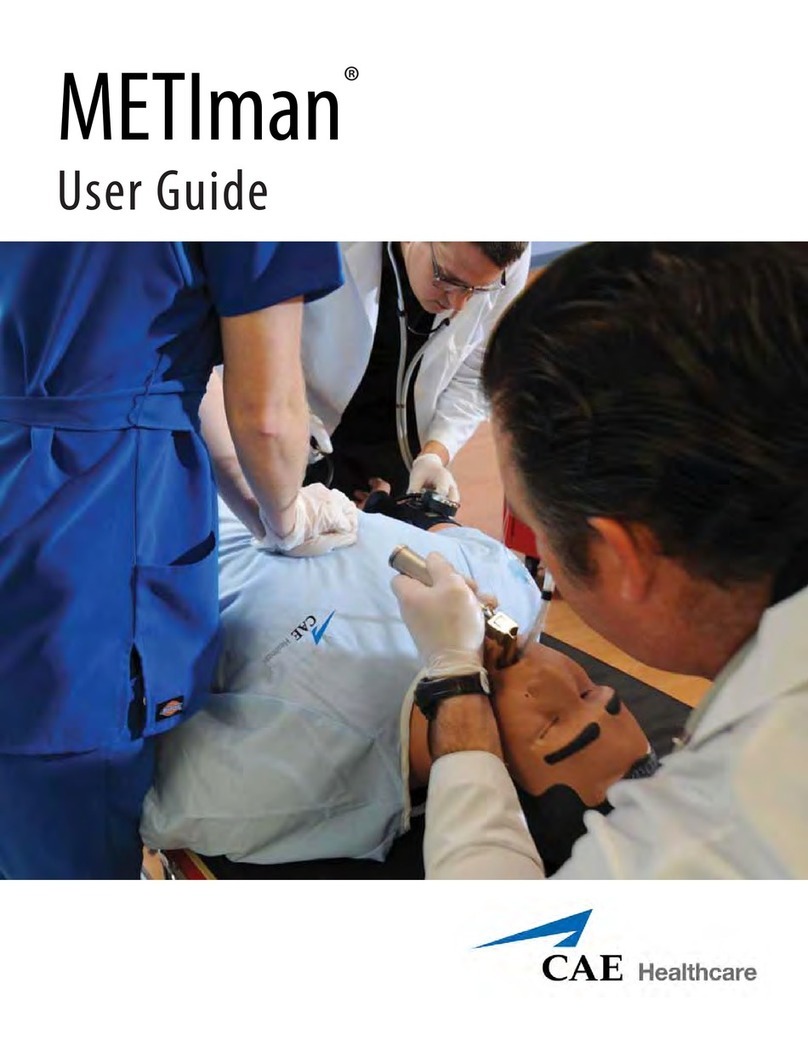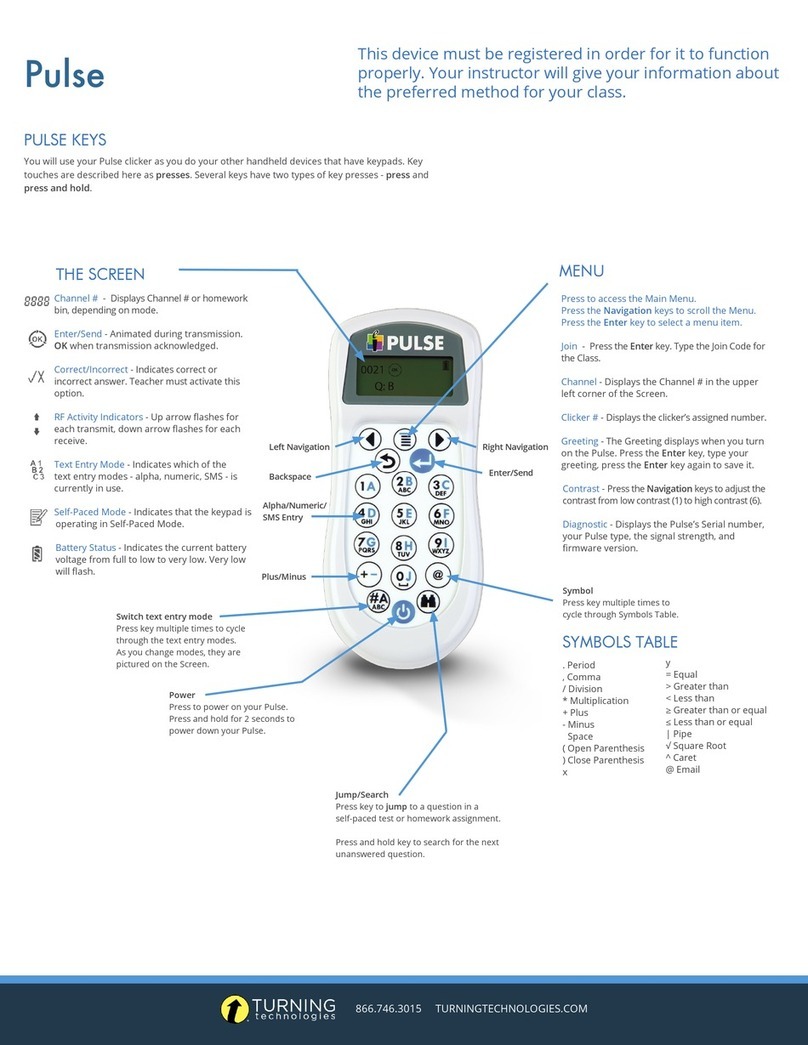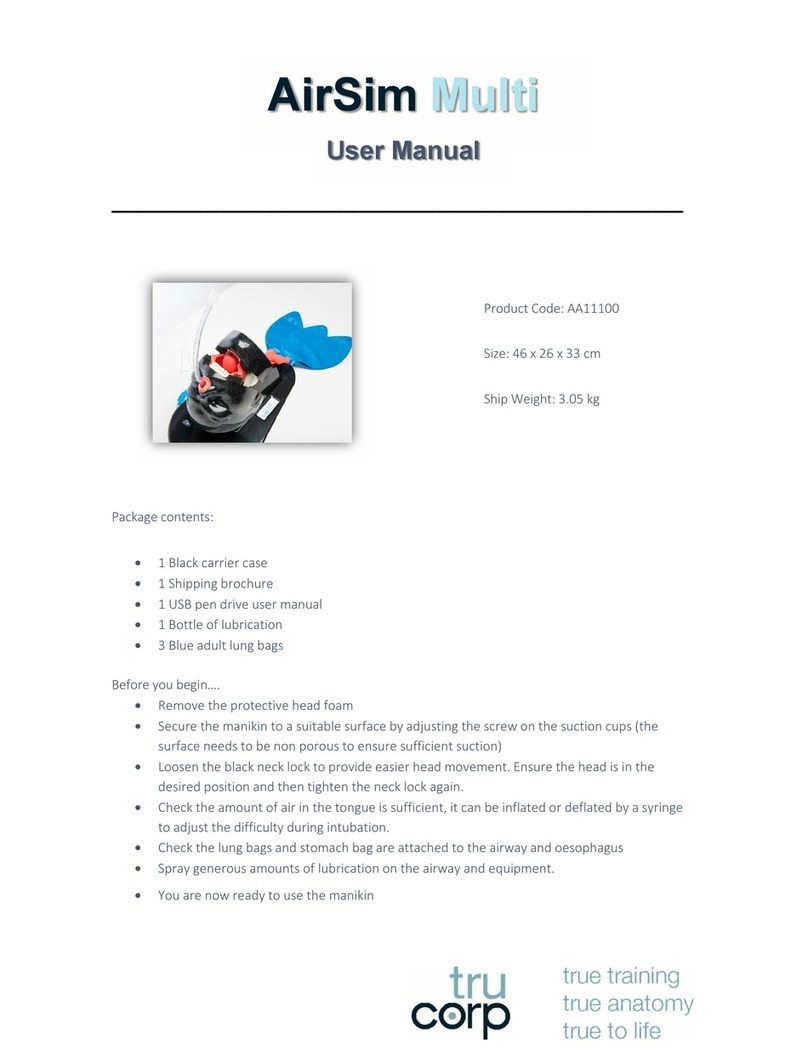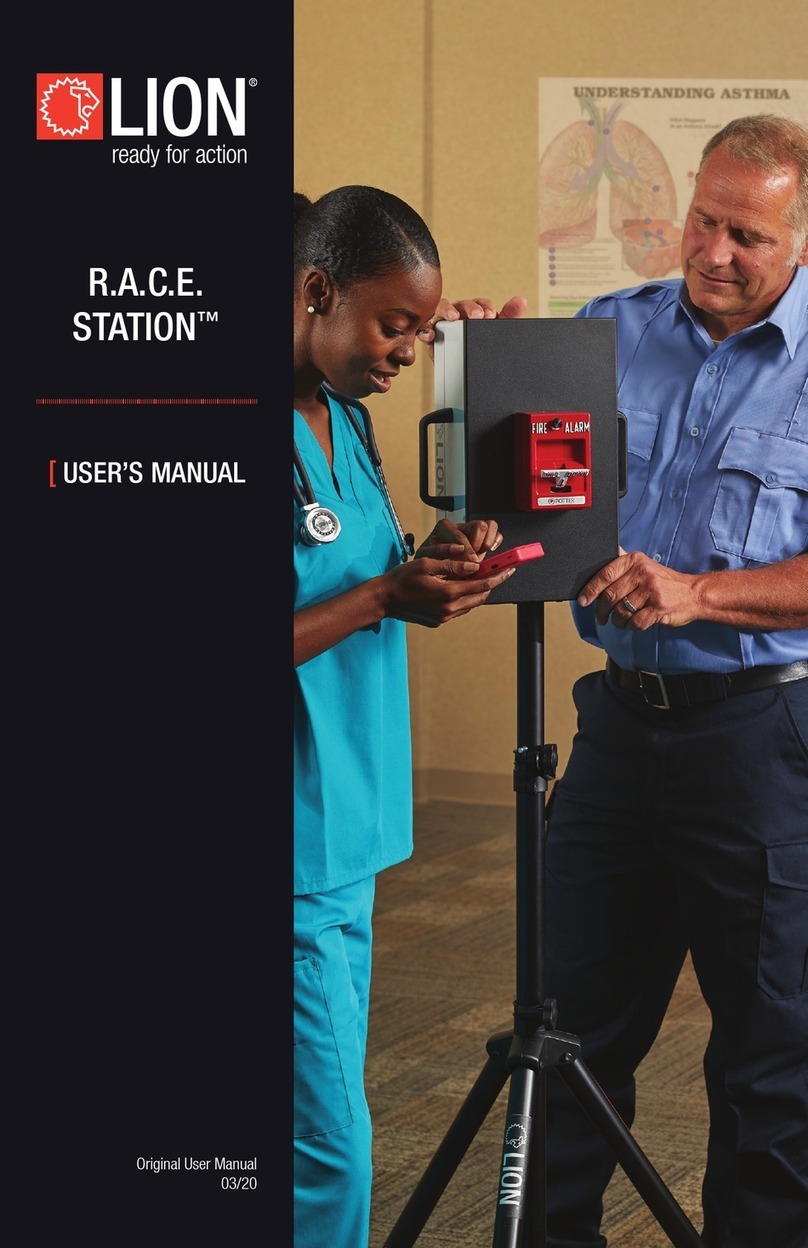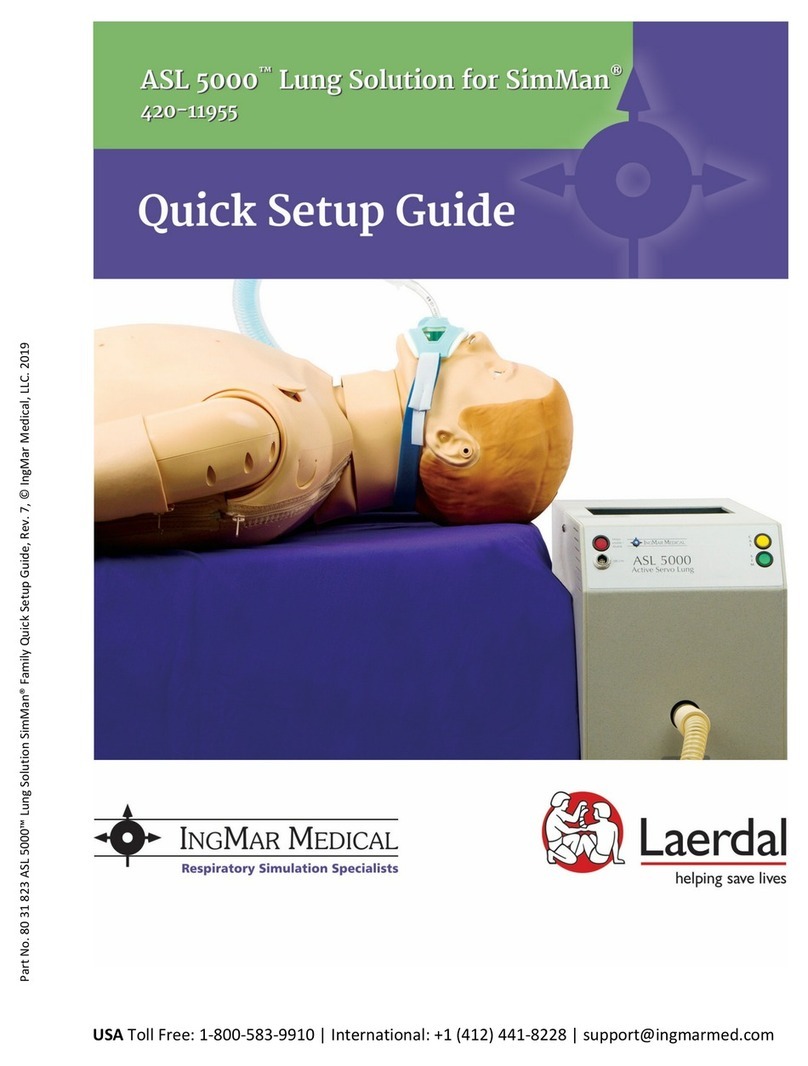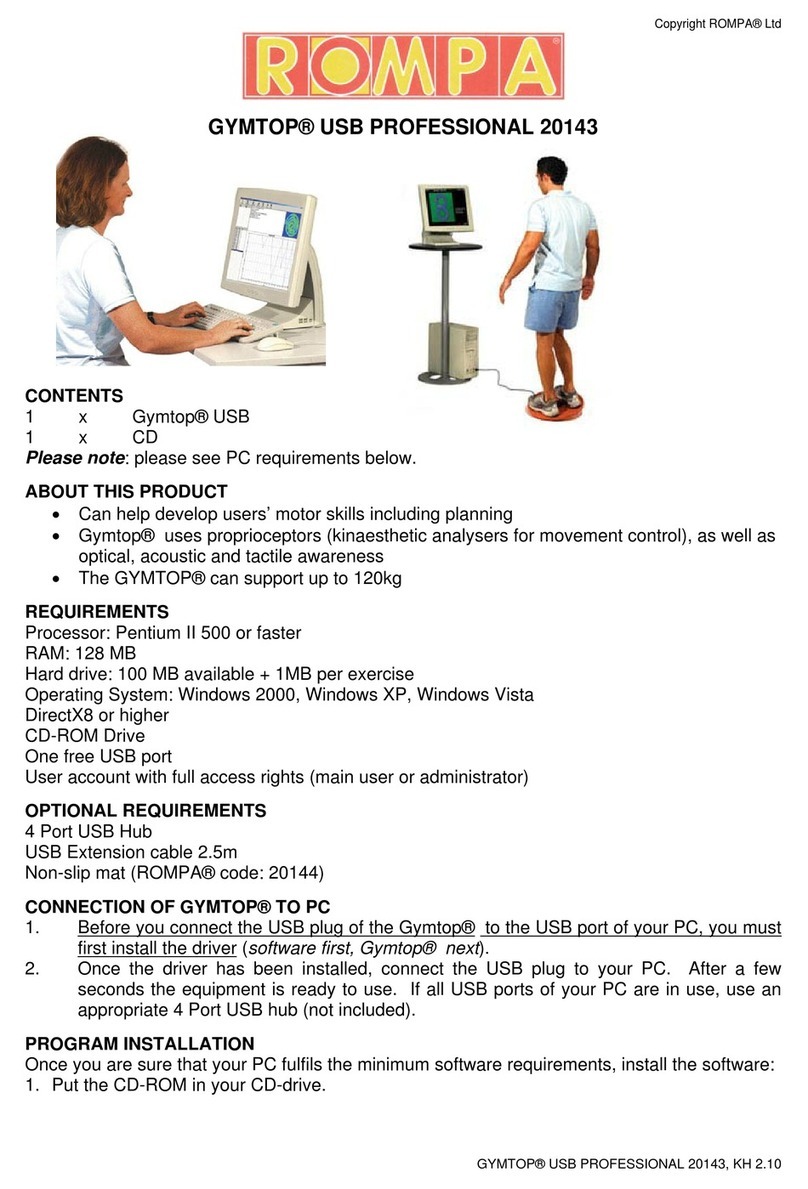
4 5
The arrow up and down keys also control the volume of the sounds that are present in the arm. From the
main menu, press the up arrow key to increase the volume, press the down arrow key to decrease the vol-
ume. The volume levels can be adjusted from level 1 (the lowest volume) to level 7 (the highest volume).
USING THE NASCO Life/form®BLOOD PRESSURE SIMULATOR
First, verify that the pressure line tubing from the sphygmomanometer and the audio line coming from
the simulated arm assembly are properly connected to the blood pressure simulator unit, as previously
described in the set up procedures. Apply the sphygmomanometer cuff and gauge to the simulated arm
assembly in the usual manner. Apply the stethoscope to the simulated arm, also in the usual manner.
Set the systolic and diastolic controls to the desired levels. Select the auscultatory gap if desired. Finally,
adjust the pulse rate control to the desired setting.
To proceed with the simulated blood pressure measurement, first close the valve on the sphygmoma-
nometer bulb tightly and begin pumping air into the cuff until the gauge reads higher than the preset
systolic level chosen. Once this point is reached, loosen the valve on the bulb slightly to allow the gauge
pressure reading to decrease slowly. While monitoring the arm assembly with the stethoscope, note the
point on the sphygmomanometer gauge when the first Korotkoff sound is heard. This will be the systolic
blood pressure. Allow the pressure in the cuff to continue to decrease until the point at which the last
pulse is heard, noting the reading on the gauge. This is the diastolic blood pressure.
Compare the results of reading the systolic and diastolic blood pressures on the gauge with the respec-
tive settings on the simulator. If the readings were accurate, they should compare favorably with the pre-
set values. If the auscultatory gap had been selected, then an absence of an audible pulse would have
been noticed during what would have been the phase 2 Korotkoff sound. It is this lack of an audible pulse
that is considered an auscultatory gap. Note that in reality the auscultatory gap can be present in either
the phase 1 or phase 2 Korotkoff sounds. If it is desired to demonstrate the sounds heard while measuring
a subject’s blood pressure to the trainee or group of trainees, an auxiliary amplifier/speaker system is
available (LF01189U). If the auxiliary speaker is used, the speaker is plugged into the EXT AUDIO AMP
jack located next to the ARM output jack at the top of the unit. Adjust the volume control to increase the
output of the auxiliary speaker amplifier, and proceed with the blood pressure measurement sequence
as it would normally be performed, except that the stethoscope need not be used. Instead, listen to the
sounds as they emanate from the speaker amplifier, noting the differences in the Korotkoff phases being
presented.
PALPABLE PULSE FEATURE
The Nasco Life/form®Blood Pressure Simulator also incorporates a palpable pulse at the radial
location. (See figure 9.) Palpations can be felt upon start-up of the unit or after blood pressure settings
have been made. Press the Menu key repeatedly until “Set PALPATION” menu appears. “Pulse ON” is
defaulted and enables the palpation feature.
The pulse in the wrist will begin when the electronic box is turned on. During the actual blood pressure
reading, the palpable pulse will turn off when the cuff is inflated and surpasses the systolic set point. It
will turn on again when the cuff is deflated 20 mmHg BELOW the diastolic set point.
NOTE: The pulse feature is turned off during this time to allow students to clearly hear the Korotkoff
sounds through the stethoscope without interference from the background noise of the pulse feature in
the wrist. The palpable pulse is delicate and should be palpated lightly as you would with a real patient.
Pressing too hard can damage the pulse feature.
Make sure the cable from the blood pressure arm is properly connected to the electronic box and the
Palpation feature is in the “PULSE ON” mode. A pulseless condition can be simulated by switching your
unit to the “pulseless” mode. Press the Menu key repeatedly until “Set PALPATION” menu appears. By
pressing the down arrow at this point, palpations can be disabled, causing the simulator to be pulseless.
When in the “pulseless” mode, all settings are automatically reset to 0 and all blood pressure sounds are
disabled. The pulseless setting will also turn off the sounds in the arm. The pulse will always be on unless
the pulseless feature is activated or if the systolic or heart rate levels are set to zero. To do this, press the
Menu key four times.
Pulse Location
Figure 9
Figure 10 Figure 11
The down arrow key will set the pulse to pulseless. Press the arrow up key to turn the pulse back on.
(See figure 10.) Located to the right of the Menu key is the auscultatory Gap key. (See figure 11.) This key
is included to simulate the auscultatory gap that is sometimes present between phase 1 and phase 2
sounds in which no audible sound is noted during this portion of auscultation. This control function is
included so that the trainee can become familiar with this phenomenon. Pressing the Gap key simply
turns the gap function off or on. When the key is pressed, a message will briefly appear that the ausculta-
tory gap is enabled or disabled. Also the main display will show (at the bottom right of the display) either
AGap:Y (for on) or AGap:N (for off).
HC190001INM48.indd 7-8 7/2/19 7:22 AM

